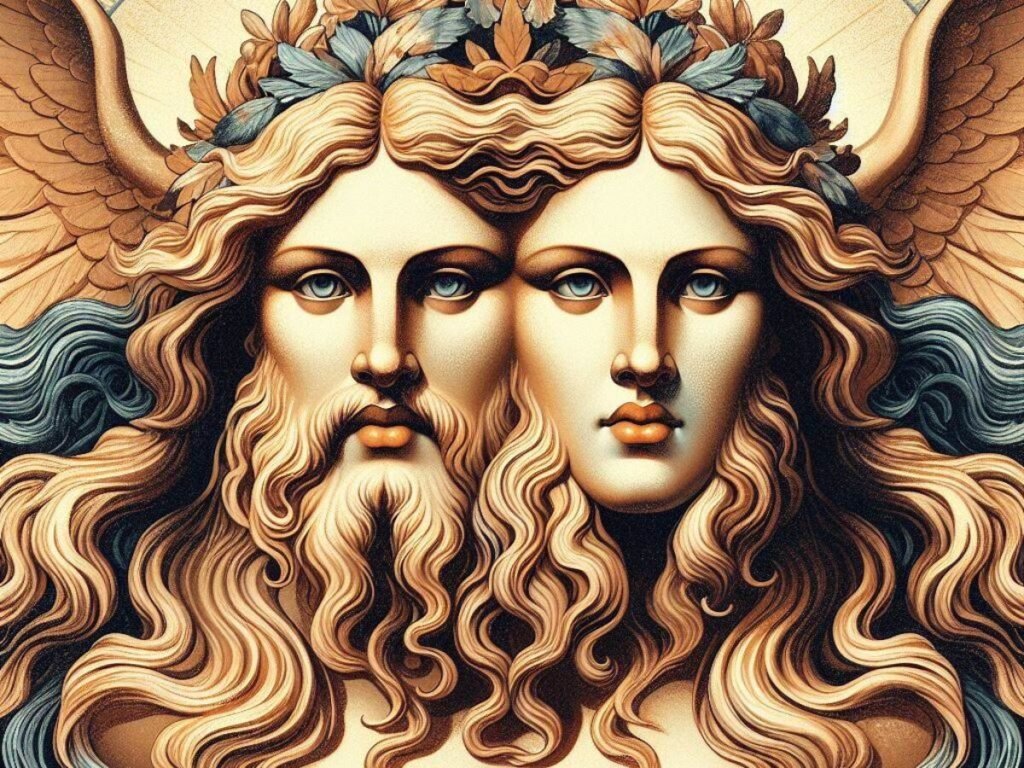In today’s article, we will delve into the fascinating world of deities who are both male and female. These divine beings represent a unique concept of gender and embody various aspects of masculinity and femininity. By exploring their stories and characteristics, we can gain a deeper insight into the diverse perspectives on gender and divinity across different cultures and religions. From ancient mythologies to modern beliefs, these gods challenge and redefine traditional gender binaries, offering a fresh perspective on the complexity and fluidity of gender identities. Join us on this journey as we unearth the rich history and significance of these divine beings.
The Origins of Gendered Deities
The concept of gendered deities can be traced back to ancient civilizations, where gods and goddesses were worshipped as personifications of natural forces, celestial bodies, or the abstract principles of life. In many ancient cultures, such as Mesopotamia, Egypt, and India, the idea of dual gender gods existed alongside other gods with binary genders. These dual gender deities embodied the belief that gender is not defined by anatomical sex but is a more fluid and encompassing concept.
For example, in Hindu mythology, the deity Ardhanarishvara is depicted as half male and half female. Ardhanarishvara represents the union of Lord Shiva and his consort Parvati and symbolizes the inseparability of masculine and feminine energies within the cosmic order. Similarly, the ancient Egyptians worshipped the god Hermaphroditus, who combined the attributes of the male god Hermes and the female goddess Aphrodite.
These gender-fluid deities were not limited to ancient civilizations. In contemporary times, some religious and spiritual traditions also recognize and worship gender-variant gods. It’s important to note that the understanding and acceptance of gender diversity in different cultures and religions can vary widely, and not all traditions embrace gender-fluid deities.
Exploring Gender Fluid Gods and Goddesses
Let’s dive deeper into the stories and characteristics of a few gender-fluid deities across different cultures:
1. Ardhanarishvara – Hindu Mythology
In Hindu mythology, Ardhanarishvara is an androgynous deity who embodies the union of Lord Shiva and Parvati. The right side of Ardhanarishvara represents Shiva, with masculine features and attributes, while the left side represents Parvati, with feminine features and attributes. Ardhanarishvara symbolizes the balance and interdependence of masculine and feminine energies in the universe.
Worshipping Ardhanarishvara is believed to promote gender equality, harmony, and the recognition of the divine within all genders. Devotees see the deity as a guiding force, encouraging them to transcend dualities and embrace the fluidity of gender identities.
2. Hemaphroditus – Ancient Greek Mythology
In ancient Greek mythology, Hemaphroditus is a god who possesses both male and female characteristics. Hemaphroditus was the child of the gods Hermes and Aphrodite. The god’s appearance was a combination of male and female traits, often shown with a male body and female breasts.
The myth of Hemaphroditus recounts a story of divine transformation, highlighting the fluidity of gender and sexuality. The god was believed to possess immense beauty and was often associated with desires and passions that transcended traditional gender roles.
3. Tlazolteotl – Aztec Religion
In Aztec mythology, Tlazolteotl is a deity associated with fertility, sexuality, and purification. Tlazolteotl is depicted as a goddess with multiple aspects, including the ability to change her gender. She is often portrayed as an elderly woman, symbolizing wisdom and experience, and as a young and seductive woman, representing youthful passion.
As a gender-fluid deity, Tlazolteotl embodies the fluid nature of human sexuality and the duality between sin and purity. Worshippers seek her guidance in matters of sexual and spiritual transformation, believing that she can help cleanse their souls from impurities and provide them with a fresh start.
Implications and Significance
The existence of gender-fluid deities challenges traditional notions of gender and highlights the complexity of human identity. These divine beings offer an alternative perspective on gender and sexuality, promoting acceptance, inclusivity, and the dismantling of stereotypes and prejudices.
By recognizing and worshipping gender-fluid deities, individuals and communities can embrace the diversity of human experiences and create space for people of all genders to express themselves authentically. These deities serve as role models, reminding us that gender is not rigid, and that we can celebrate the beauty and power in embracing our true selves, regardless of societal expectations.
Inclusivity and Understanding
It is important to approach the study and exploration of gender-fluid deities with respect and cultural sensitivity. Different cultures and religions have varied beliefs and perspectives on gender, and it is essential to avoid appropriating or misinterpreting their sacred narratives.
By fostering open-mindedness, empathy, and a willingness to learn, we can broaden our understanding of gender and contribute to a more inclusive society. Exploring the stories and traditions surrounding gender-fluid deities allows us to appreciate the diverse ways in which humanity has sought to make sense of the complexity of gender throughout history.
Conclusion
The existence of gender-fluid deities challenges societal norms, fostering a greater understanding and acceptance of gender diversity. These divine beings offer a different lens through which we can explore and celebrate the complexity of gender as an integral part of our human experience.
As we continue to navigate the intricate tapestry of gender identities, the stories and characteristics of gender-fluid deities inspire us to embrace our true selves and promote a more inclusive and compassionate world for all. In recognizing the divinity within and beyond traditional gender boundaries, we come closer to appreciating the interconnectedness and unity of all beings.
